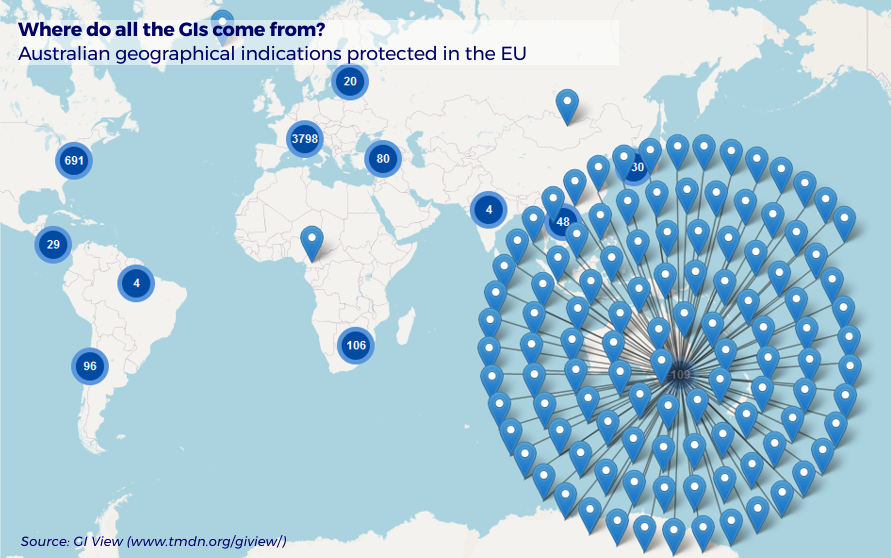 This technical note accompanies “What are geographical indications?”
This technical note accompanies “What are geographical indications?”and “Will ‘Melton Mowbray’ stay protected in the EU?”
Geographical indications — place names or names associated with locations that are used to identify products — are a priority in the European Union’s trade policy. But there are so many criteria, categories and databases that finding out what is protected can be pretty confusing.
Often the first databases we reach via the EU website are the ones containing protected names in different categories: wines, spirits, and other products such as food and beer. Even those three do not contain names the EU protects as a result of its trade agreements with other countries.
They only contain names that are protected via a complete registration process, not the ones listed in bilateral agreements. And for registration, there are also four different ways that the EU protects these names:
- protected designation of origin (PDO)
- protected geographical indication (PGI)
- geographical indication of spirit drinks and aromatised wines (GI) — just to confuse everyone else who uses “GI” to mean all geographical indications
- traditional speciality guaranteed (TSG)
Thankfully, there is one database to bind them all: GI View.
It contains all names protected in the EU, whether registered (including names still going through registration) or listed in bilateral agreements — from all over the world.
Here are some fun facts from applying various search filters on GI View, at the time of writing (January 5, 2021).
Where the names come from (some names may come from more than one country):
- Total names in the database = 5,091
- From EU countries = 3,344
- From rest of the world = 1,747
Whether via registration or under special deals (including free trade agreements):
- Registration = 3,498
- Under agreements = 1,593
Where the registered names come from:
- Registration, from non-EU countries = 154
- Registration, from the UK (left the EU in 2020) = 86 (registered or submitted for registration while the UK was an EU member)
- Registration, from non-EU, non-UK = 68
All of this has implications for how the UK protects non-EU countries’ names.
Note: For searching by country, EU members are listed first, then the rest of the world — alphabetically according to 2-character country code where Switzerland is “CH” and the UK is “GB”.)
As well as listing the search results, the database can also map where the names come from. This can be a lot of fun. First, this is the map for the whole dataset. There are three single items. They are: “Íslenskt lambakjöt / Icelandic lamb”, “Poivre de Penja” from Cameroon, and “Увс чацаргана / Uvs Seabuckthorn” from Mongolia — all three with registration applied for:
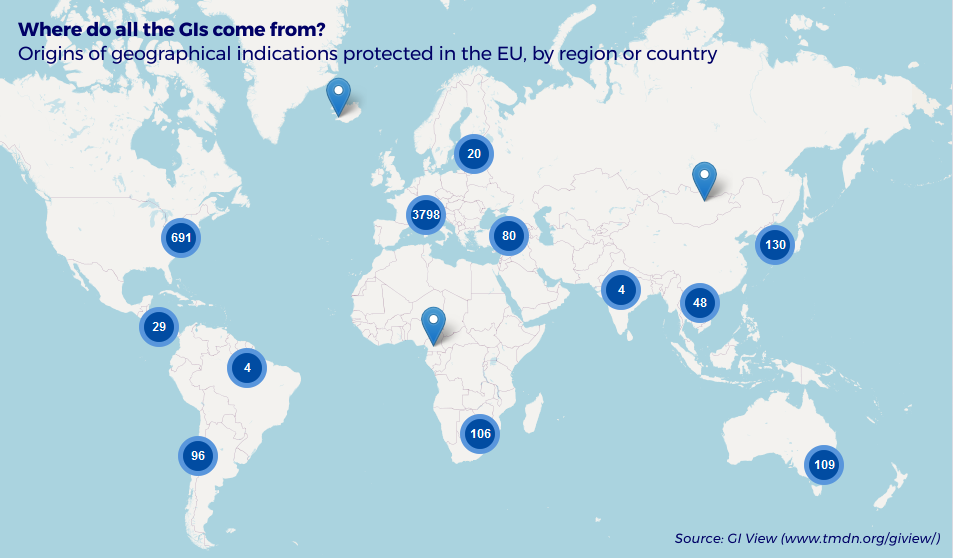
What about those 691 names in North America? Click on the dot and we get:
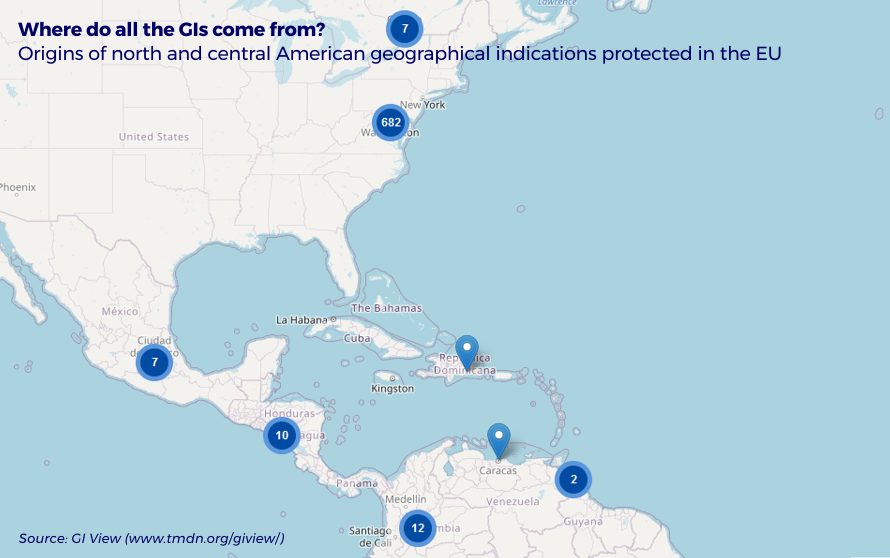
And for East Aisa?
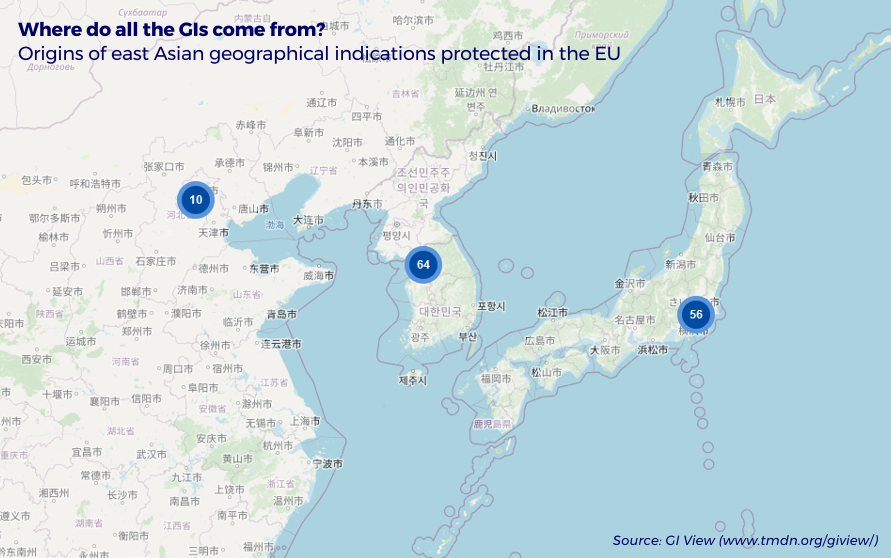
What about Europe? Now it gets pretty congested. Some of the dots still cover several countries:

What if we click on the count of a single country like Australia, with 109 names protected in the EU?
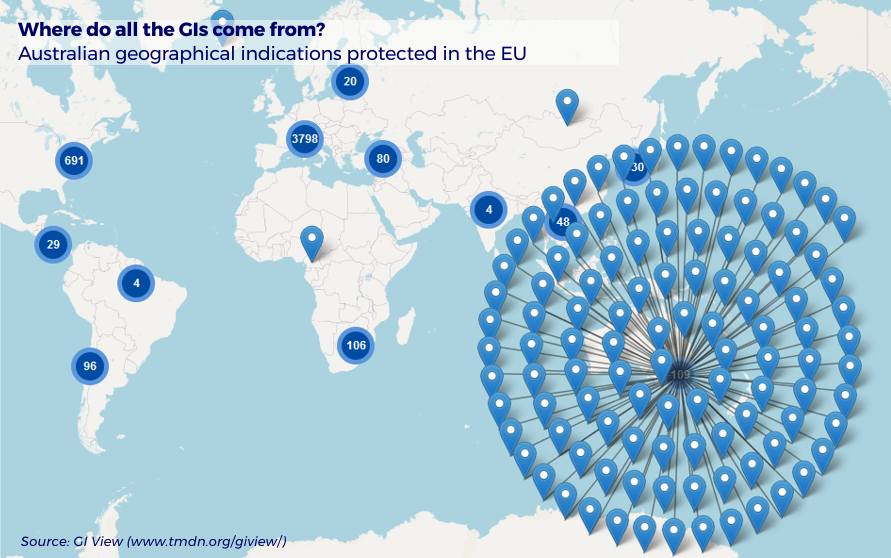
To see each geographical indication, we have to get down to this level, and click on each item. (Or we could just select the “list” display instead of “map”.)
To view the original blog post, please click here
